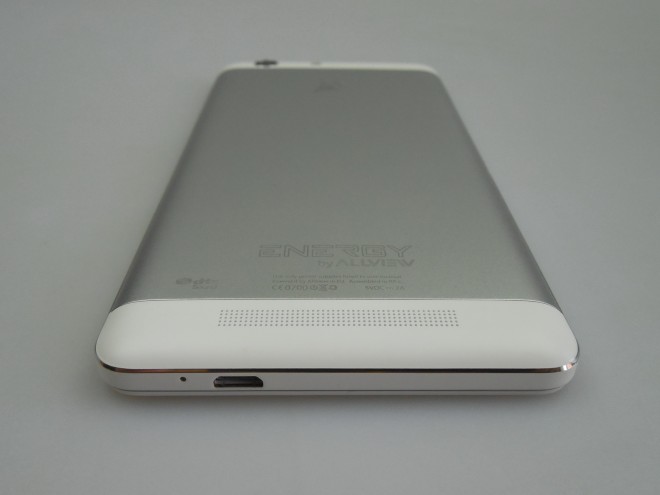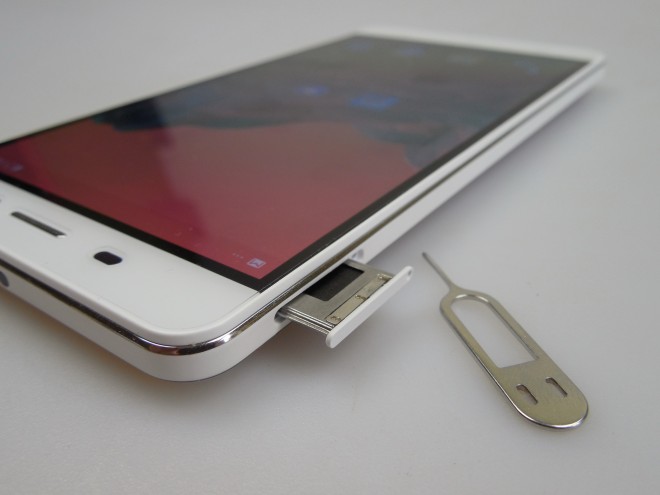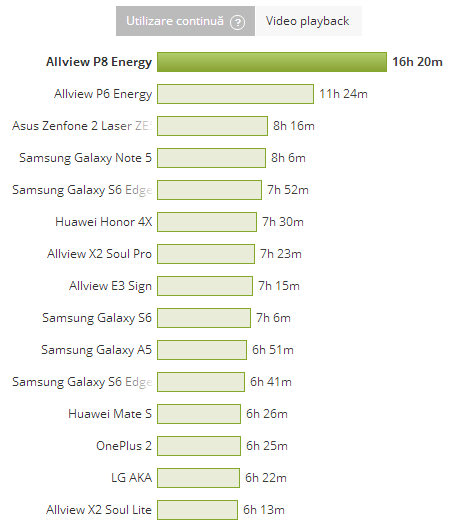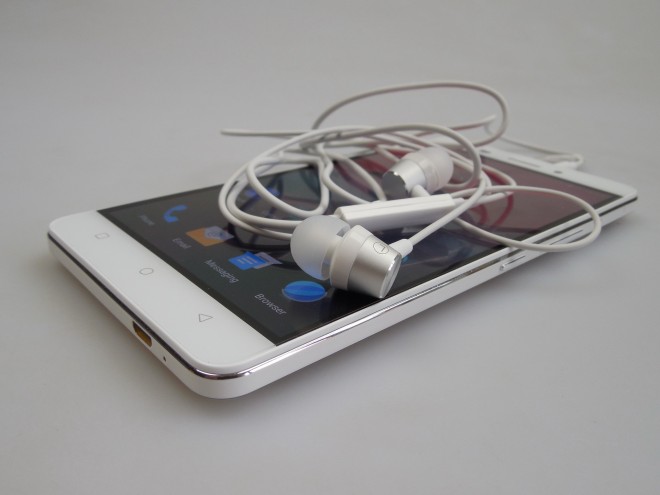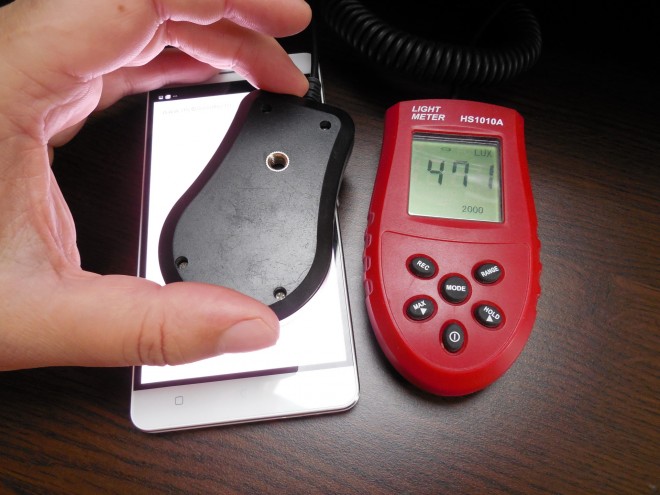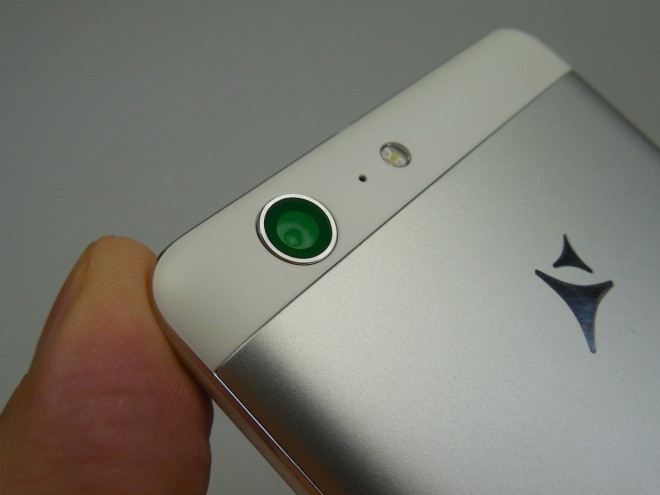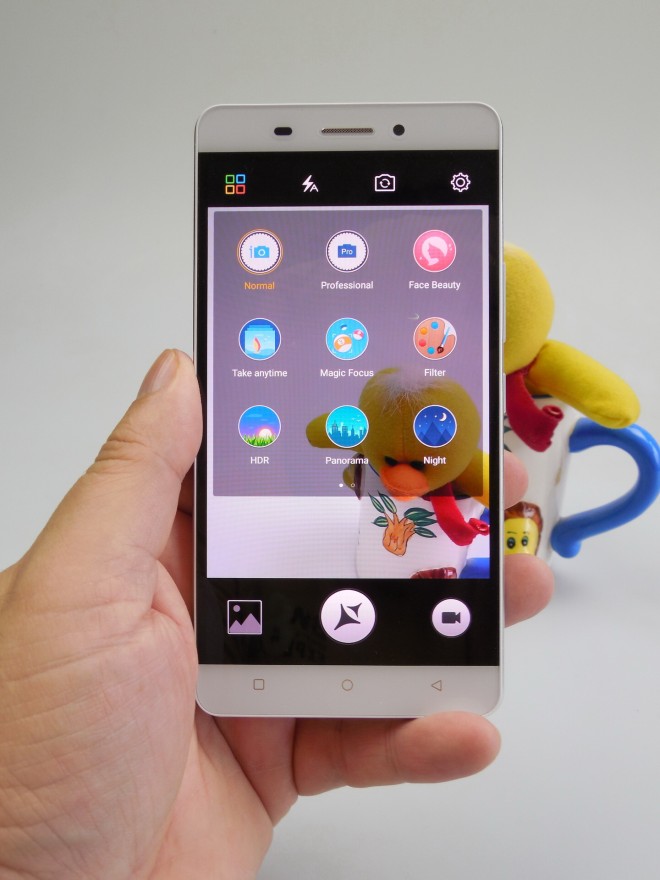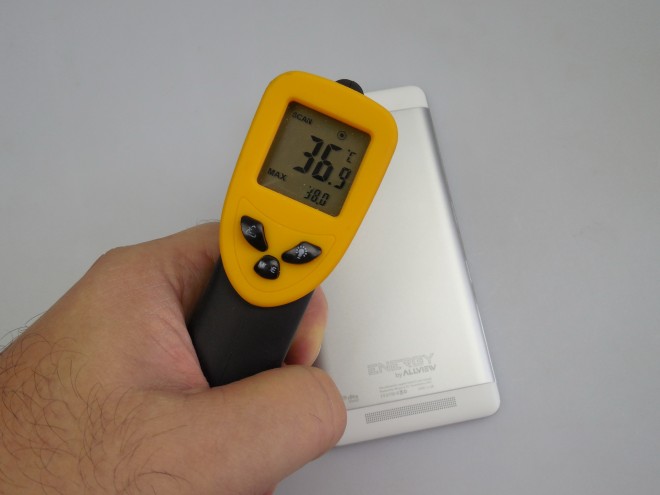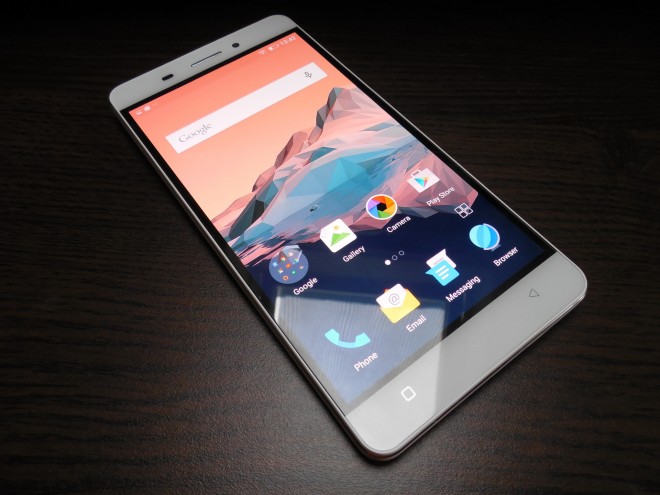Earlier this fall we had the opportunity of playing with the Allview P8 Energy, a locally integrated version of the Gionee Marathon M5, by Romanian company Allview. This model is a big battery phablet, that was launched this fall and it’s priced at $346.
It comes in black, white or gold and measures 8.5 mm in thickness, which is surprising for a 6000 mAh unit. Weighing 212 grams, the smartphone manages to be thinner than the HTC One M9 (9.6 mm) or the ZenFone 2 Laser (10.8 mm). I should also mention that the phablet is 55 grams heavier than the HTC One M9 and even 40 grams heavier than the iPhone 6 Plus.
The device has the same length as the ZenFone 2 Laser and it’s 6 mm shorter than the iPhone 6 Plus. It has a very solid case and build and it feels very… compressed and dense. Its facade provides an edge to edge illusion, but it’s not all display. The external bezel reaches 4.75 mm in thickness, so it’s quite slim. We’ve got a strong metal frame here and one hand usage is reasonably comfy.
Upfront there’s the earpiece, front camera, status LED and 3 capacitive buttons. At the back we find the main camera, LED flash, microphone and speaker and this area includes a plastic material shaped to look like metal. At the top there’s the audio jack, infrared emitter, while at the bottom we can find the microUSB port and microphone.
Allview P8 Energy features dual micro SIM slots on the left side, while on the right there’s a microSD slot and a Power button, plus volume buttons. These buttons offer good feedback and once again the smartphone is very slim for its battery. This is a well built and solid model and now let’s proceed to the hardware. The integrated Gionee Marathon M5 has a 5.5 inch AMOLED OGS screen, with a 1280 x 720 pixel resolution with Gorilla Glass 3 protection.
Inside we’ve got a quad core MediaTek MT6735 processor, clocked at 1.3 GHz and this is a 64 bit chipset, with Cortex A53 cores and 28 nm build process. Other specs are Mali T720 GPU, 2 GB of RAM, 16 GB of storage, a microSD card slot (up to 128 GB cards supported), a 13 MP back camera and a front 5 MP shooter. Connectivity goes like this: LTE with download speeds of 150 Mbps (FDD and TDD), HSDPA (21.1 Mbps download speed), Bluetooth 4.0, WiFi 802.11 b/g/n 5 GHz, WiFi Direct, HotKnot, infrared, microUSB 2.0, GPS and FM radio.
Sensors offered here are accelerometer, proximity sensor, light sensor and magnetic sensor. Finally, there’s DTS sound and a 6000 mAh dual cell Li-Po battery on this handset. The charger bundled here is a 5V/2000 mA unit and it does fast charging, theoretically. On paper the above mentioned battery provides 750 hours of standby, 1500 minutes of talk time and 4 days of mixed usage.
It can also provide 120 hours of music playback, 12 hours of games and 23 hours of movies, plus 20 hours of browsing. The charger is able to adjust between 12V/1.3A and 5V/2A and with a 10 minute charge you can get 75 hours of standby or 5 hours of talk time. In our test, that involves HD video playback in a loop, with WiFi on and brightness at 200 LUX, we achieved a fantastic 22 hours and 24 minutes of playback.
This beats all the other phones we tested, like the Lumia 1520 (17 hours), Allview P6 Energy (12 hours and 9 minutes) and iPhone 6 Plus (12 hours). No other models surpasses us. In PCMark, that simulates continuous usage we achieved 16 hours and 20 minutes, once again great. This beats the Allview P6 Energy (11 hours and 24 minutes), ASUS ZenFone 2 Laser (8 hours and 16 minutes) and once again no other model surpasses us.
You can easily get 2 or 3 days of usage from this phablet. Charging takes 3 hours and 10 minutes, which is quite good for such a big battery. It charges slower than the Xperia M5 (3 hours and 4 minutes), HTC Desire 820 (2 hours and 57 minutes) and Allview X2 Xtreme (2 hours and 44 minutes), but faster than the ASUS ZenFone 2 Laser (3 hours, 24 minutes).
It’s also faster than the Xperia Z3 (3 hours and 30 minutes) and iPhone 6 Plus (3 hours and 16 minutes). An interesting feature here is the ability to charge two devices using the Allview P8 Energy as a power bank and a bundled special cable. One of them ends with a microUSB connector and other with a Lightning one. My own iPhone 5 was charged in 1 hour and 40 minutes from this phone and only depleted 30% from the P8 Energy’s battery.
Settings include a Power Manager, with options like None and Normal Mode (less apps open in background, dark theme, turn off Bluetooth, GPS and sync), as well as Extreme Mode (black and white UI, only calls and messages available). You are supposed to get 3 hours of talk time with 5% battery in the Extreme Mode.
Other battery options are Intelligent Power Saving at Night, Intelligent Memory Cleanup and Standby Intelligent Power Saving. Overall, this is the battery phone battery I’ve ever tested. Now we go to the acoustics, where we find the back speaker, with DTS sound and a smart audio amplifier. The Music app has big icons and a minimal UI, while its options include shaking to change the song.
The equalizer includes DTS with special headphone modes and custom sound experiences depending on genre (Classic, Dance, Folk, Jazz and More), plus an user defined area with 5 custom channels with sliders. You can also tweak the theme of the player. The listening experience involves a loud and clear sound, plus an extra volume option, that kind of triggers a distortion effect.
We’ve got good bass, a warm and clean sound and no muffling. Headphones bundled here have a long and tangling wire, but also metallic looking buds. They’re elegant, comfy and offer great noise canceling and bass. High notes are well rendered and the sound is clear. Inserting the headphones triggers options like Standard Headset, Ears Headset, Earphone Headset, Soundbox and these custom DTS tweaks: DTS Focus, DTS Trubass, DTS Space, DTS Definition and DTS Center.
FM radio is in the mix as well, with a minimal UI and the ability to record from it. We did a decibelmeter test and got 81.5 dBA at the front and 82.6 dBA at the back, which is decent, but not more. We surpassed the Huawei Mate S (80.7 dBA) and Huawei Honor 6 (81 dBA), but we scored below the Huawei P8 Lite (82.9 dBA) and iPhone 6 Plus (83.8 dBA), as well as Allview E2 Jump (89.6 dBA).
Now let’s talk about the display, a 5.5 inch AMOLED unit, with a 1280 x 720 pixel resolution and Gorilla Glass 3 protection. OGS technology is also here and the player preinstalled on the handset offers DTS sound and pop up play as well. The actual viewing experience brought us a bright image, deep blacks and the colors were a bit oversaturated. I also found those black edges around the screen a bit annoying, as if they were affecting the aspect ratio of the video.
The contrast was so-so and the sunlight behaviour wasn’t very good, so the screen is not legible in these conditions. View angles are wide and the pixel setup is actually a very rare ocurence. We’re dealing here with a setup identical to the one of the Galaxy Note 2, with RGB Stripe arrangement, with a blue pixel with two subpixels that are green and red.
Also, you can notice the long blue pixels in the microscope shot we took. Samsung opted for these panels instead of Pentile ones, for the sake of a longer lifespan. We measured the brightness of the Allview P8 Energy and got to 471 LUX, which is an excellent result. We surpassed the LG G4 (432 LUX), OnePlus 2 (460 LUX) and HTC One M8 (463 LUX).
The integrated Marathon M5 is less bright than the Galaxy S5 (480 LUX), Evolio Onyx (564 LUX) and iPhone 6 (570 LUX). Settings for the display have among them Adaptive Brightness (optimize for available light), Economical Backlight and Font Size. Overall, a very good screen, aside from the black edges and oversaturation. And now let’s see what the camera is all about.
At the back there’s a 13 MP back shooter, with a Samsung S5K3M2 sensor measuring 1/3.06 inches and offering 1.12 micron pixels. This is an ISOCELL sensor, also found on the Xiaomi Mi4c and some other models. There’s a 5 MP front shooter available here, too. Allview claims that you can focus in 0.39 seconds and that you can takes pictures in 0.37 seconds.
The Camera app opens up reasonably fast and the UI is typical for Lollipop, with colorful and big icons. You can tweak camera options like Anti Banding, Guidelines, geotagging, countdown, resolution (13 MP in 4:3 or 10 MP in 16:9), Capture Mode (Normal/Touch) and volume key functionality. 3 flash options are available and the main capture modes are these ones: Face Beauty (with options like larger eyes, slimmer face and more), Filter, Night, Pro, Magic Focus, Panorama, Normal, Take Anytime, HDR and Picnote.
The latter lets you create a PDF from a photographed document or blackboard. The Pro mode is one to look out for, with tweaks brought to exposure, ISO up to 1600, white balance, shutter speed (from 1/30 seconds to 14 seconds) and focus options. Video capture has Scenes, microphone tweaks, exposure functionality, anti banding and anti shake. You can also customize white balance and film in 1080p and 720p.
The camera experience involved fast focus, too fast exposure change and a fluid zoom. Picture taking was also fast and you can move the exposure and metering frame to adjust the capture experience better. We took a gallery of shots using the main camera in early September and we got some crisp indoor photos, then some pretty good HDR images, with nice representations of clouds.
Some of the photos do have a wrongly set exposure and that exposure feels a bit rushed sometimes. Landscape shots look great and if you zoom into them, you’ll see the details are quite clear. Colors are realistic and selfies look OK, providing good skin texture. Lighting is also pretty good, with nice white balance and focus. I have to say I was surprised to see there aren’t any blurry shots in that big gallery.
Panorama looks nice, but its resolution is underwhelming, at 4608 x 1184 pixels. It’s also a bit curved. Colors are great and we’ve got some good closeups here and there, achieved with the aid of the Magic Focus option. HDR feels a bit too much sometimes, but on the bright side of things we have a nice shade of blue caught on camera. Flower macros look very nice and focus is a strong point of this cam.
This has to be the best Allview midrange phone camera I’ve seen lately. Colors are even more vivid than on the flagship Allview X2 Xtreme, but quality is less impressive. This model does beat the likes of HTC Desire 820 or Galaxy S4 for example. I like the phone better than the Xperia M5 in some shots, to be honest. Videos were filmed in Full HD, in the 3GPP format, at 25 FPS and with a 14 Mbps bitrate.
The first video had to face a strong wind, but had OK clarity and realistic colors. It was a bit shaky, though. The second video brought some exposure problems, while the third one had good colors, good lighting and nice details, but lost some of the details when zooming in. The fourth video once again highlighted realistic colors, good clarity, crisp image and good white balance and exposure.
The fifth video was good too, and the last one suffered from detail loss, but had OK stabilization. This is one of the best 3GPP capture I’ve seen, since usually this format is associated with trouble and I mean lesser quality. It beats about 50% of the Huawei handsets we’ve tested this year, that excel in photo taking but not necessarily video.
Then we come to the editing part, done with the usual filters, crop, straighten and rotate options, plus exposure and contrast features. We also did a temperature test, achieving 38 degrees Celsius after playing the game Riptide GP2 for 15 minutes, so there’s no overheating here. The web browser is fast and the virtual keyboard is the stock one from Lollipop.
As far as connectivity goes, I regret the lack of NFC, WiFi a and ac. The GPS is fast to find us, we’ve got dual microphones, good signal, clear calls and good noise canceling. The dialer offers features like black list, speed dial and noise reduction. Now we’ve reached the benchmarks, where we pitted the Allview P8 Energy versus the Huawei Honor 4X, Philips Xenium i908 and HTC Desire 820.
This is a battle of the 4 core MediaTek MT6735 + 2 GB of RAM versus the HiSilicon Kirin 620 + 2 GB RAM, versus the MediaTek 6592 + 2 GB of RAM versus the Snapdragon 615 + 2 GB RAM. Here are the results:
Allview P8 Energy wins 3 out of 12 benchmarks and 4 if we eliminate the HTC from the list. It’s close to the octa cores and doesn’t register any lag. The phablet runs Riptide GP2 in a pretty OK manner, with top notch graphics. As far as the OS and UI go, we get Android 5.1 with very small customization, so the experience is pretty much a stock one.
Multitasking is basically done using the carousel view and if you keep the screen pressed, you can view the widgets, effects and apps, some of the widgets being unique and nice looking. The dropdown area features notifications and with a swipe up you can view Quick Settings and shortcuts to features like Fake Call, Torch, Calculator, Camera and the brightness slider.
Settings include encryption, smart gestures (smart dial, pause alarm, smart brightness) and black screen gestures (draw letters to trigger apps). Then there’s the Suspend button, the floating widget with virtual buttons. The preinstalled apps list doesn’t feature bloatware and it includes the following names:
Bitdefender Mobile Security
Browser
Calculator
Calendar
Camera
Chameleon
Chrome
Compass
Drive
Email
Facebook
File Explorer
FM radio
Gmail
Google
Google+
Google Settings
Hangouts
Maps
Notes
Peel (use infrared to control TV sets, DVD players and more)
Photos
Play Books
Play Games
Play Music
Play Newsstand
Play Store
Settings
Sound Recording
System Manager
System update
Theme Park
Torch
Video
Voice Search
Weather
YouTube
So, no lag and no bloatware means that we get a pretty clean UI and software. And now let’s see the verdict!
Here are the Pros:
fantastic battery
very solid build
good acoustics
very bright screen
surprisingly good camera
no bloatware
stock Lollipop
And the Cons:
massive design
old CPU
screen with black edges
oversaturated screen a bit
camera rushes exposure
gets a bit hot when charging two devices
We don’t give out grades anymore, but I have to say this is one solid power bank replacement. It can charge two devices at once without missing a beat, it has a bright screen and reasonable acoustics. Allview P8 Energy, the integrated Gionee Marathon M5 is a very solid midrange phablet, with great multimedia features and basically no big flaws. Only the old CPU and the massive chassis may be a drawback.



